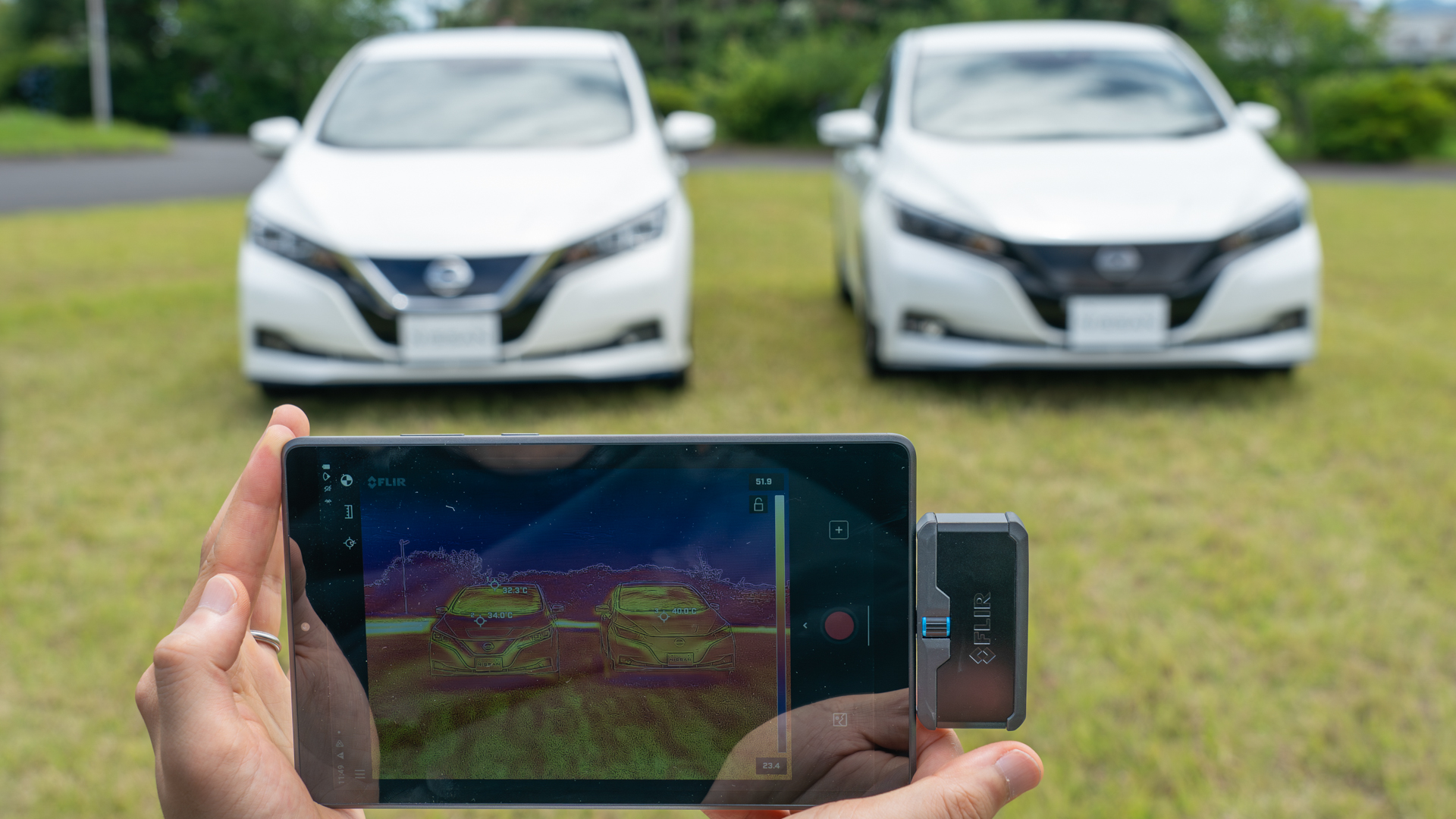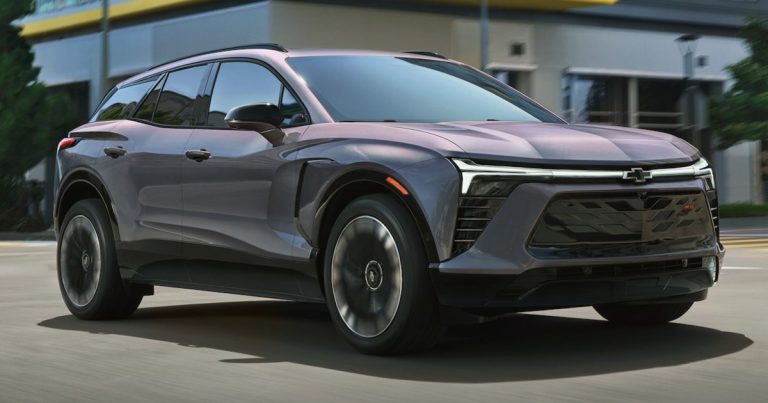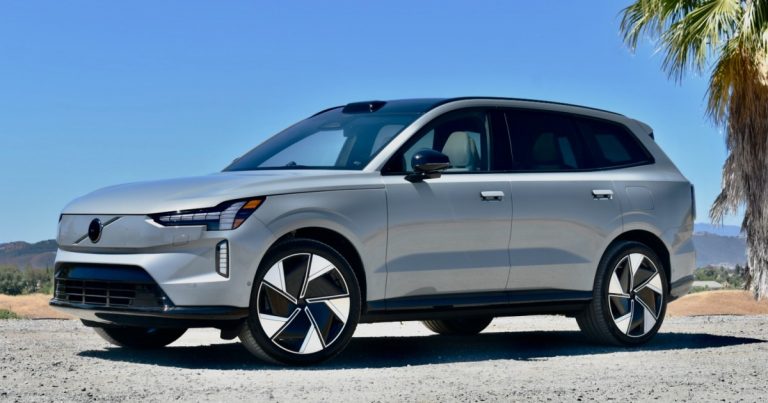Nissan Invents Car Paint That Can Lower Interior Temps by Nearly 10 Degrees

Thermal paint coatings aren’t new. For decades, commercial buildings from schools to skyscrapers have used specialized coatings on roofs and exterior walls to keep their interiors as cool as possible. However, you can’t just use those same finishes for cars, as car paint needs to be light, thin, and durable—everything thermal coatings typically aren’t. However, Nissan is working on a special cooling paint designed for automotive use, and it’s reportedly proving effective in testing.
Nissan simply calls it “cool paint,” and it’s essentially a white paint that reflects solar energy. The cooler a car cabin is in the summer, the less air conditioning is needed. That’s helpful for internal combustion cars but it’s an even bigger deal for electric vehicles, where extensive AC use poses the most significant energy draw. To showcase its new cool paint, Nissan painted some service vans at the Tokyo International Air Terminal at Haneda and has begun a 12-month feasibility trial contract with the airport.



When parked next to normally painted vehicles at the airport, where there’s very little shade, Nissan says it recorded interior temps around 9 degrees Fahrenheit cooler for the coated car. That’s a noticeable difference in comfort and could drastically reduce air conditioning use, extending EV range. Nissan doesn’t say whether the cars in that comparison specifically were both painted white, but its “cool paint” still appears to thermally outperform regular white, as the images below illustrate.
“My dream is to create cooler cars without consuming energy,” said Dr. Susumu Miura, senior manager and expert at the Advanced Materials and Processing Laboratory, Nissan Research Center. “This is especially important in the EV era, where the load from running air conditioning in summer can have a sizable impact on the state of charge.”
Nissan is aware that it’s not the only one working on thermal coatings for vehicles, but it says its approach is unique, thanks to two specific microstructure particles. One reflects near-infrared rays that “typically cause molecular level vibrations within the resin of traditional paint to produce heat,” according to the company. The other creates electromagnetic fields that counter the sun’s rays, and redirect that energy back into the atmosphere. Additionally, the coating can be applied to cars in a way that’s not only effective but supposedly applicable on a large scale.




Rather than typically thick thermal coatings that require rollers to apply, Nissan’s cool paint is thin enough to be sprayed onto a car at a layer of 120 microns. That’s far thinner than the usual 400 microns, or even 800 microns of some thermal paints. Most thermal paints also can’t function with a clear top coat but Nissan’s is different, so it can be protected from scratches, rock chips, road salt, or anything else that car paint needs to endure over a lifetime.
There are still some downsides, though. One is cost, as this sort of paint isn’t going to be cheap. The other is weight. While 120 microns is considerably thinner than most thermal paints, it’s still many times thicker than normal car paint tends to be, so it will add mass. However, Nissan is testing its cool paint in various thicknesses and applications, as well as working on colors other than white, to hopefully use it on road cars someday.
Got tips? Send ’em to tips@thedrive.com
Source: www.thedrive.com





